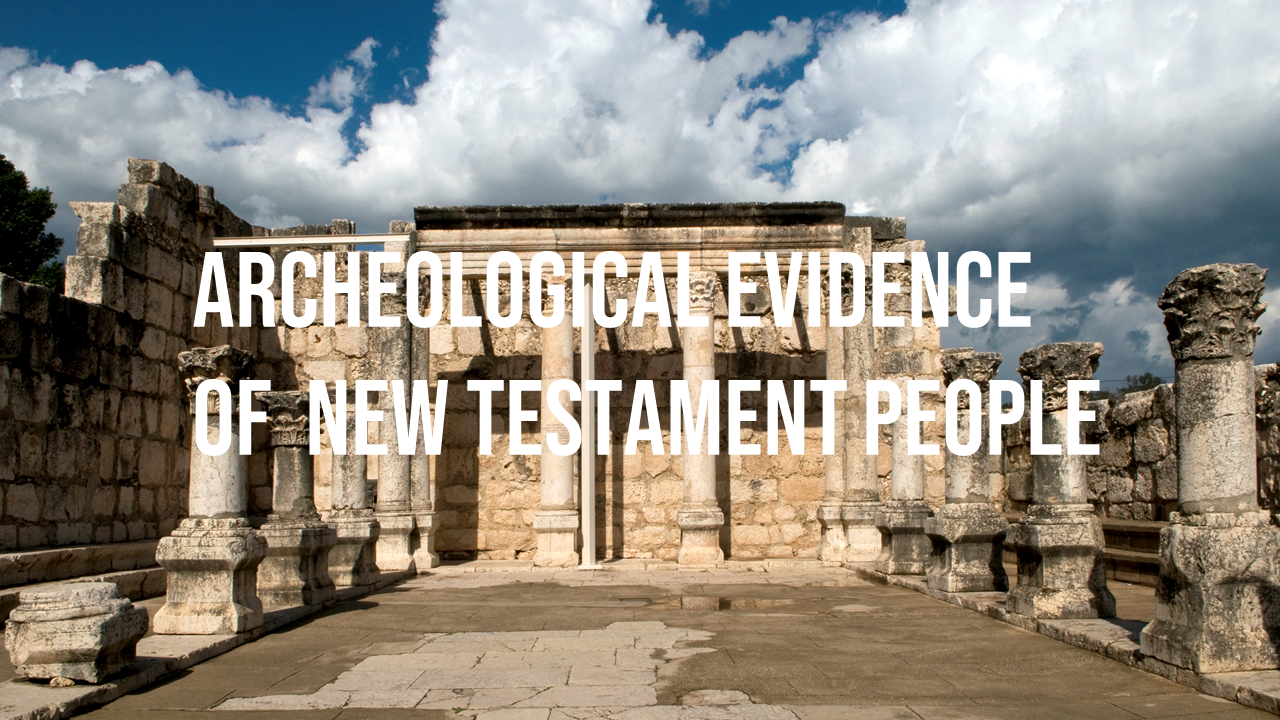
Religious And Political Leaders In New Testament Times
Person That Existed : Herod The Great (37 BC – 4 CE)
Roman client king of Judea 37-4 B.C. Known for his colossal building projects throughout Judea, including his renovation of the Second Temple in Jerusalem and the expansion of the Temple Mount towards its north. Herod appears in the Gospel Of Matthew as the ruler of Judea who orders the massacre of the innocents at the time of the birth of Jesus.
Now after Jesus was born in Bethlehem of Judea in the days of Herod the king, behold magi from the east arrived in Jerusalem saying, “Where is He who has been born King of the Jews ? For we saw His star in the east, and have come to worship Him. ” And when Herod the king heard it, he was troubled, and all Jerusalem with him
Matthew 2:1-3
How We Know : The Herodium And Tomb Of Herod The Great
The Herodium is a truncated-cone shaped hill, 7.5 miles south of Jerusalem, and 3.1 miles southeast of Bethlehem. Herod The Great built a palace fortress and a small town at Herodium, between 23 and 15 BC, and is buried there. It is the highest peak in the Judaean Desert. It is controlled by the Israel National Parks Authority and is a designated national park.

Person That Existed : Tiberius Caesar (42-37 CE)
Tiberius Claudius Nero ascended to Emperor as Augustus. The Gospels mention that during Tiberias reign, Jesus of Nazereth preached and was executed under Pontius Pilate, the Roman governor of Judaea appointed by Tiberius Caesar. Tiberius is mentioned by name in Luke 3:1. The city of Tiberias is referenced in John 6:23 which was located near the sea of Galilee.
Now in the fifteenth year of the reign of Tiberius Caesar, when Pontius Pilate was governor of Judea, and Herod was tetrarch of Galilee, and his brother Philip was tetrarch of the region of Ituraea and Trachonitis, and Lysanias was tetrarch of Abilene,
There came other small boats from Tiberias near to the place where they ate the bread after the Lord had given thanks
Luke 3:1
How We Know : Denarius Of Tiberius
This tribute penny was the coin that was shown to Jesus when he made his famous speech “Render Unto Caesar” The phrase comes from the gospel account in Mark 12:14 where Jesus is asked, “Is it lawful to give tribute to Caesar, or not?” and he replies, “bring me a penny, that I may see it” (Mark 12:15)
And they came and said to Him, “Teacher, we know that You are truthful, and defer to no one; for You are not partial to any, but teach the way of God in truth. Is it lawful to pay a poll-tax to Caesar, or not? “Shall we pay, or shall we not pay?” But He, knowing their hypocrisy, said to them, “Why are you testing Me? Bring Me a denarius to look at.” And they brought one. And He said to them, “Whose likeness and inscription is this?” And they said to Him, “Caesar’s.” And Jesus said to them, “Render to Caesar the things that are Caesar’s, and to God the things that are God’s.” And they were amazed at Him.
Mark 12:14-17

Person That Existed : Pontius Pilate Prefect Of Judea (26-36 CE)
Pontius Pilate was the fifth governor of the Roman province of Judea, serving under Emperor Tiberius from 26 to 36 AD. He is best known for being the official who presided over the trial of Jesus and ordered his crucifixion in 33 AD.
Now Jesus stood before the governor, and the governor questioned Hims, saying, “Are You the King of the Jews?” And Jesus said to him, “It is as you say.” And while He was being accused by the chief priests and elders, He made no answer. Then Pilate said to Him, “Do You not hear how many things they testify against You?”
Matthew 27:11-13
How We Know : The Pilate Stone
In a staircase near the theatre at Caesarea Maritima, excavations discovered a monument stone reused as building material that had a dedicatory Latin inscription reading “Tiberium, Pontius Pilatus, Prefect of Judea...dedicated.” The inscription, dating between AD 26-36, refers to this Roman politician with his name, his title, and a dedication to the reigning Emperor Tiberius. (Unearthing The Bible, Titus Kennedy)

John The Baptist
On July 28th 2010 a team of Bulgarian archaeologists excavated a small alabaster box containing several pieces of bone from under the altar of the fourth century AD St. Ivan the Forerunner Church on Sveti Ivan, a Black Sea island off Sozopol on the Bulgarian coast: “We knew we would find a reliquary there and our expectations came true”, lead archaeologist Professor Kazimir Popkonstantinov wrote in an e-mail to CNN: ”It seems rather logical to suggest the founders of the monastery did their best to bring relics of its patron saint.”[53] That saint was John the Baptist, after whom the Island of Svetti Ivan (St. John) and St. Ivan (John) the Forerunner Church were named. Another piece of evidence supporting the hypothesis that the relics belonged to John the Baptist was found 1.2 meters from the reliquary, a small tuff box (made of hardened volcanic ash) bearing inscriptions in ancient Greek: “The inscription makes it clear that a man named Thomas, ‘God’s servant brought a particle of St. John here on the 24th.’ Even though some of the end letters are missing, the inscription in Greek makes it clear that the date refers to the [traditional] birthday of St. John the Baptist, June 24.” bethinking.org
Now in those days John the Baptist came, preaching in the wilderness of Judea, saying, “Repent, for the kingdom of heaven is at hand.” For this is the one referred to by Isaiah the prophet, saying, “The voice of one crying in the wilderness, ‘Make ready the way of the Lord, Make His paths straight!'”
Matthew 3:1-3
John the Baptist appeared in the wilderness preaching a baptism of repentance for the forgiveness of sins. And all the country of Judea was going out to him, and all the people of Jerusalem; and they were being baptized by him in the Jordan River, confessing their sins.
Mark 1:4-5
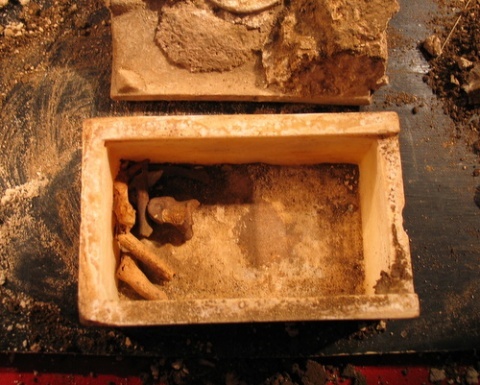
James The Brother Of Jesus
James, the brother of Jesus, was leader of the church in Jerusalem, alongside the apostle Peter, immediately after the death and resurrection of Jesus. He was put to death by the sanhedrin, the Jewish council, in AD 62, according to the 1st century writer, Josephus.
In November 2002, the Biblical Archaeology Review reported that an ossuary had come to light bearing the inscription: ‘James, son of Joseph, brother of Jesus’ (Ya’akov bar Yosef akhui di Yeshua).
New Testament scholar Ben Witherington says: ‘If, as seems probable,
the ossuary found in the vicinity of Jerusalem and dated to about AD 63 is
indeed the burial box of James, the brother of Jesus, this inscription is the
most important extrabiblical evidence of its kind.’
Joseph M. Holden and Norman L. Geisler: The Popular Handbook of Archaeology and the Bible
‘Experts have confirmed the presence of microbial patina on the ossuary and on both parts of the inscription: ‘James, the son of Jospeh’ and ‘brother of Jesus,’ demonstrating the unity and antiquity of the inscription. … Other researchers from the Royal Ontario Museum in Toronto confirmed that the patina within the letter grooves is consistent with the patina on the surface of the ossurary; thus legitimizing the entire inscription’s antiquity
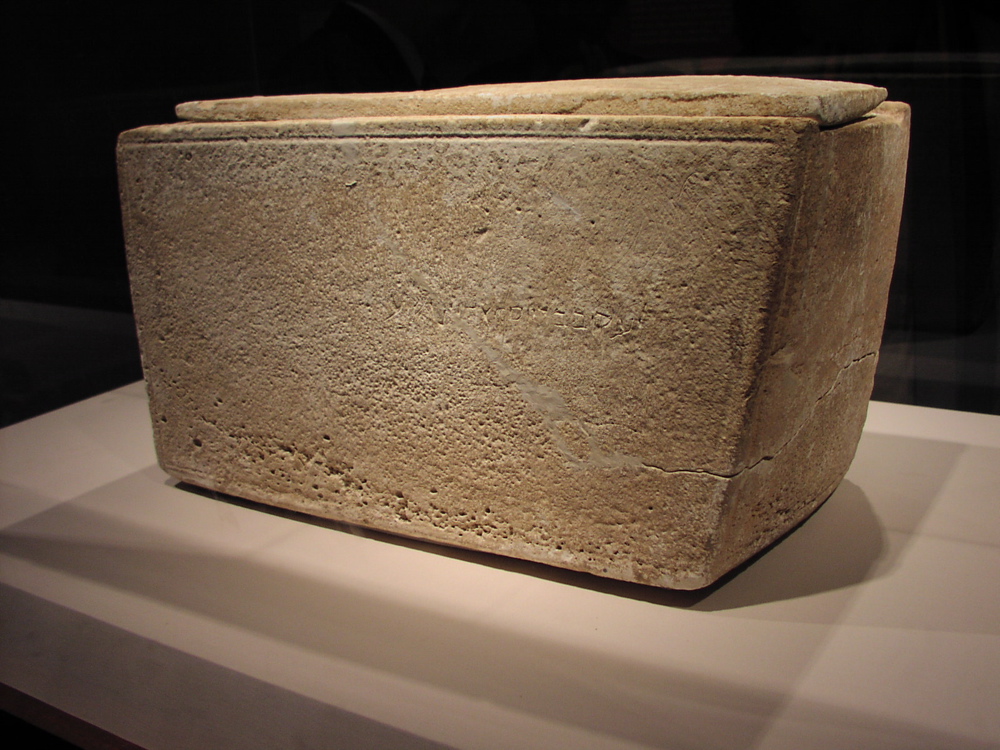
Person That Existed : Caiaphas The High Priest
Joseph Caiaphas was the acting high priest in Jerusalem from about AD 18-36 according to information from the Gospels, Acts, Josephus and the Mishnah. Josephus relates that Caiaphas was appointed by the Roman prefect Valerius Gratus and continued his tenure through the time of Pontius Pilate. Caiaphas oversaw the Jewish interrogation of Jesus, and the sentence of death pronounced on Him.
This was the practice at the three yearly festivals, and on the fast day; but Vitellius put those garments into our own power, as in the days of our forefathers, and ordered the captain of the guard not to trouble himself to inquire where they were laid, or when they were to be used; and this he did as an act of kindness, to oblige the nation to him. Besides which, he also deprived Joseph, who was also called Caiaphas, of the high priesthood, and appointed Jonathan the son of Ananus, the former high priest, to succeed him.
How We Know : Caiaphas Ossuary
A recently discovered ossuary, (a box, usually carved from stone, which stored human bones and places in a tomb) of Miriam, the daughter of Caiaphas, excavated west of Jerusalem in the Elah Valley, contains an inscription demonstrating that the Caiphas family was of the priestly lineage of Ma’aziah, a priest from the tribe of Levi who was appointed during the time of David. Twelve ossuaries were found inside the tomb, one carved from limestone, had a 1st century AD Aramaic inscription reading Yehosef bar Qayafa which means Joseph, son of Caiaphas. (Unearthing The Bible, Titus Kennedy) (Discovered in 1990, Israeli archaelogist Zvi Greenhut)

The Barsabbas Family
Early in the book of Acts, Luke describes how Jesus’ eleven remaining disciples went about replacing Judas after his suicide: “Therefore it is necessary to choose one of the men who have been with us the whole time the Lord Jesus went in and out among us, beginning from John’s baptism to the time when Jesus was taken up from us. For one of these must become a witness with us of his resurrection.” (Acts 1:21-22) Two men were proposed for the position – Joseph called Barsabbas (also known as Justus) and Matthias. The disciples prayed: “Lord, you know everyone’s heart. Show us which of these two you have chosen to take over this apostolic ministry, which Judas left to go where he belongs.” Acts 1: 24-25 Then they cast lots, and the lot fell to Matthias. On a later occasion: “the apostles and elders, with the whole church, decided to choose some of their own men and send them to Antioch with Paul and Barnabas. They chose Judas (called Barsabbas) and Silas, two men who were leaders among the brothers.’” (Acts 15:22)
Modern archaeological findings cast light upon these references to Joseph and Judas Barsabbas. As reported by Jerusalem Christian Review (December 2000 online edition), Israeli archaeologists have uncovered a 1st century tomb in the mountainside off the Kidron Valley, containing ossuaries bearing signs of the cross. The inscriptions identify the cave as the tomb of the Barsabbas family. Historian Ory N. Mazar states that “at least some members of this family were among the very first disciples of Christ.” The ossuaries included:
• Simon Bar-Saba, the Hebrew version of ‘Simon Barsabbas’
• Mary, daughter of Simon maybe one of the several Marys in the NT (eg. Matthew 28:1)
• Joseph Barsabbas
• The other candidate from Acts, Matthias, may have belonged to the same family, as one of the other coffins in the same cave carries the name M’T’I’, Hebrew for ‘Matthias’
• Another Son of Saba was Judah (the Hebrew form of the Greek Judas) Barsabbas
Professor Mazar comments:
the impact of these fascinating discoveries is multiplied when we consider the additional evidence found in the tomb such as coins and artifacts, that clearly show the tomb was hermetically sealed less than a decade after the crucifixion of Christ. This is years before any part of the New Testament was written, proving that the Scriptures are consistent with the archaeological evidence.
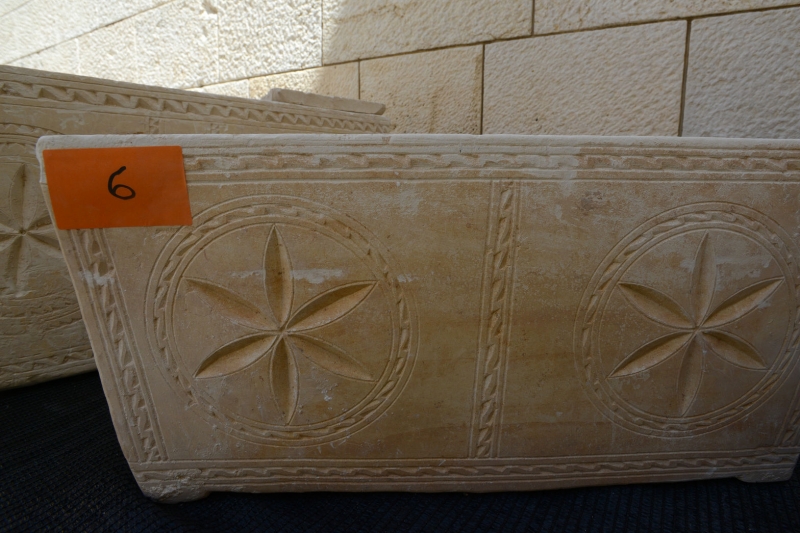
Philip The Apostle
Philip was one of the 12 disciples of Jesus. He is said to have preached the
message of Jesus in Greece and Asia Minor (modern-day Turkey) and one
Christian writer of the 2nd century, Polycrates of Ephesus, says he died of
natural causes in Hierapolis.
In July 2011, the Biblical Archaeological Society announced a discovery:
‘During the course of excavating a Byzantine-era church in the ancient
Greek city of Hierapolis (in modern southwest Turkey), Professor Francesco
D’Andria and his archaeological team have discovered the tomb of St Philip,one of the twelve apostles.’D’Andria told Fox News: ‘We have been looking for St Philip’s tomb for years. We finally found it in the ruins of a church which we excavated a month ago.’
An examiner.com article explained the find as follows:
‘Excavations at Hierapolis revealed a Martyrium believed to belong to Saint Philip. It was believed when the Martyrium was fully excavated the archeologist would find the tomb of Philip. Unfortunately, there was no tomb. Francesco D’Andria director of the excavations, was surprised and disappointed, but continued the work in surrounding areas. Approximately 40 yards from the Martyrium, D’Andria discovered a small church. Inside the church they found a first century Roman tomb. Evidence indicates the tomb was built in the first century and the church was built around the tomb sometime around the beginning of the fifth century. D’Andria
believes the evidence indicates Saint Philip’s remains were originally placed in this tomb in the first century and remained there for over 400 years before being moved to Constantinople. christianevidence.org

Person That Existed : Aretas The King
King Aretas IV came to power as king of Nabatea and reigned from 9 BC to AD 40. His daughter was married to Herod Antipas The Tetrarch, who is mentioned in Matthew 14:1-11 as the king who had John The Baptist executed. Part of King Aretas’s territory was the city of Damascus, where the governor under King Aretas was collaborating to seize and kill the Apostle Paul in Acts 9:22-25.
How We Know : Burial Inscription of Itaybel
A Nabatean funerary inscription found near Madaba, south of Damascus, dates to AD 37, only two years after Paul narrowly escaped death in Damascus. The inscription mentions King Aretas IV.
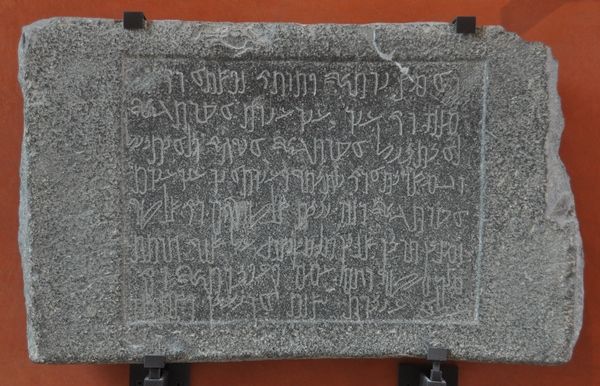
Person That Existed : Sergius Paulus Proconsul
Sergius Paulus was a Roman politician in the 1st century AD, serving under Emperor Claudius (AD 41-54) and is known to have held the offices of proconsul of Cyprus who Luke mentions in Acts 13:4-7.
So, being sent out by the Holy Spirit, they went down to Seleucia and from there they sailed to Cyprus…and when they had gone through the whole island as far as Paphos, they found a certain magician, a Jewish false prophet whose name was Bar-Jesus, who was with the proconsul, Sergius Paulus
Acts 13:4-7
How We Know : Paulus the Proconsul Inscription
A Roman period monument stone discovered at Soloi in Cyprus mentions the governor Paulus who served in the position of proconsul during part of the reign of Emperor Claudius, the same Sergius Paulus mentioned in Acts 13:4-7. A portion of the text on the stone translates “he also altered the senate by means of assessors during the time of the proconsul Paulus“ (Unearthing the Bible, Titus Kennedy)
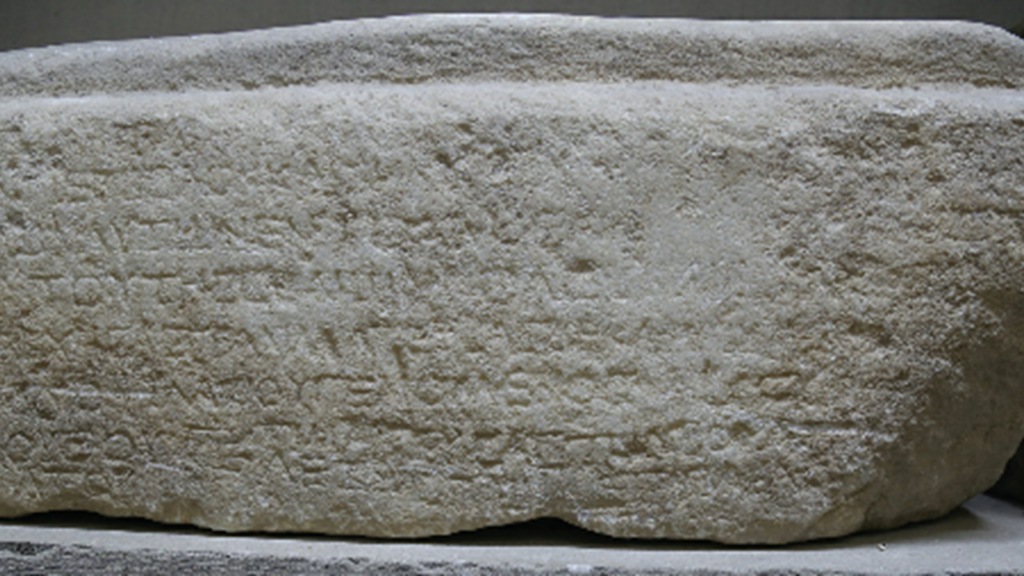
Person That Existed : Quirinius
The successful and powerful Roman official Quirinius is found in only one sentence in the book of Luke, where he is named in connection to the census taken at the time of the birth of Jesus while serving as a ruler in Syria Province.
Now it came about in those days that a decree went out from Caesar Augustus, that a census be taken of all the inhabited earth. This was the first census taken while Quirinius was governor of Syria.
Luke 2:1-2
How We Know : Epitaph of Secundus
The Quirinius found in Luke 2:1-2 was found mentioned on an ancient tombstone epitaph of a Roman military officer, Quintus Aemilius Secundus , who served under the legate and former consul Quirinius in Syria. According to the epitaph, by order of the legate Quirinius, he conducted a census of the region of Apamene, Syria, totaling 117,000 citizens, which connected to an empire wide census ordered in about 8 BC and documented in Res Gestae Divi Augusti, or the Deeds of the Divine Augustus.
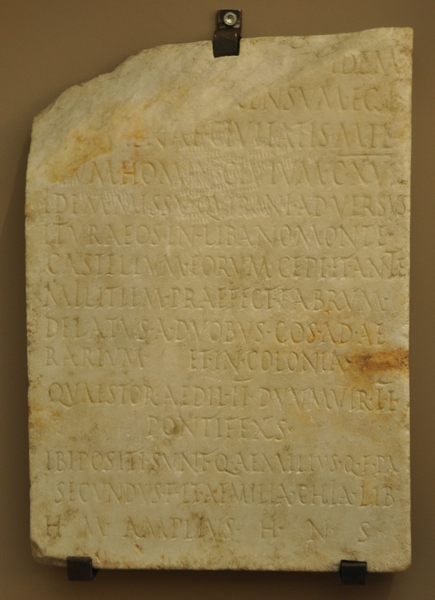
Erastus Treasurer of Corinth
John McRay reports that:
Before AD 50, an area 62 feet square was paved with stone at the northeast corner of the theatre in Corinth, Greece. Excavations there revealed part of a Latin inscription carved into the pavement which reads, ‘Erastus in return for his aedilship laid [the pavement] at his own expense.’ The Erastus of this inscription is identified in the excavation publication as the Erastus mentioned by Paul in Romans, a letter written from Corinth, in which Erastus is referred to as ‘the city treasurer’ [Romans 16:23]… the particular Greek word used by Paul for ‘treasurer’ (oikonomos) is an appropriate term to describe the work of a Corinthian aedile or magistrate supervising public works. bethinking.com
Gaius, host to me and to the whole church, greets you. Erastus, the city treasurer greets you, and Quartus, the brother. The grace of our Lord Jesus Christ be with you all. Amen.
Romans 16:23

Gallio Proconsul of Achaea
“This designation in Acts 18:12-17 was thought to be impossible. But an inscription at Delphi notes this exact title for the man, and it dates him to the time Paul was in Corinth (AD 51).” In the inscription the emperor Claudius refers to “Gallio, my friend and Proconsul”.
But while Gallio was proconsul of Achaia, the Jews with one accord rose up against Paul and brought him before the judgment seat, saying, “This man persuades men to worship God contrary to the law.” But when Paul was about to open his mouth, Gallio said to the Jews, “If it were a matter of wrong or of vicious crime, O Jews, it would be reasonable for me to put up with you; but if there are questions about words and names and your own law, look after it yourselves; I am unwilling to be a judge of these matters.” And he drove them away from the judgment seat. And they all took hold of Sosthenes, the leader of the synagogue, and began beating him in front of the judgment seat. And Gallio was not concerned about any of these things.
Acts 18:12-17
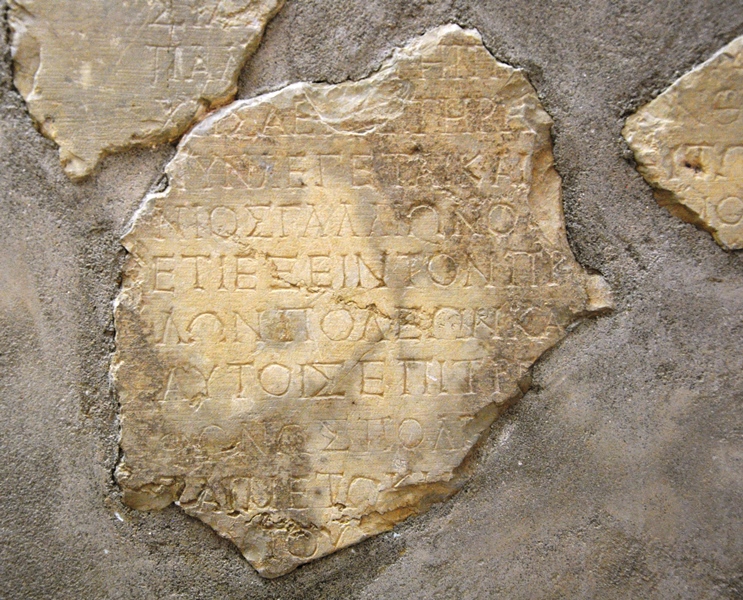
Herod Antipas Tetrach of Galilee
According to a report in the Haaretz Daily Newspaper (8th April 2005):
A marble floor dating from the first century CE was unearthed during this season’s excavations of ancient Tiberias. According to archaeologist Professor Yizhar Hirschfeld, director of the three-week dig that ended yesterday, the floor is apparently a remnant of a pavement in the palace of Herod Antipas, son of Herod the Great, who ruled the Galilee from 4 BCE to 38 CE. ‘Marble from the first century CE was very rare in this area and is found only in royal palaces. Who knows, perhaps Salome danced for the king on this very floor,’ Hirschfeld said, referring to the New Testament story of the daughter of Herodias, Antipas’ wife, who demanded the head of John the Baptist on a platter in exchange for the dance. bethinking.org
At that time Herod the tetrarch heard the news about Jesus, and said to his servants, “This is John the Baptist; he has risen from the dead; and that is why miraculous powers are at work in him.” For when Herod had John arrested, he bound him, and put him in prison on account of Herodias, the wife of his brother Philip.
Matthew 14:1-3
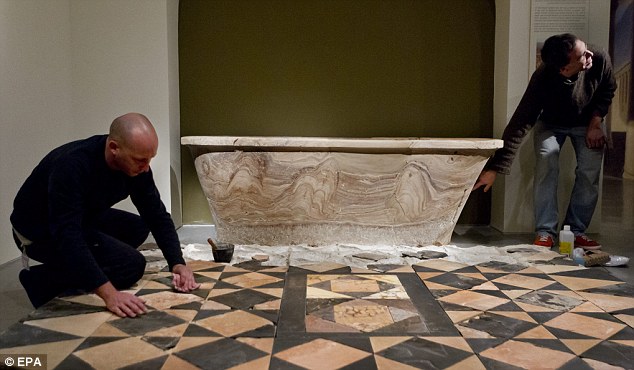
Lysanias Tetrach of Abilene
An inscription was found at Albia near Damascus from the time of Tiberius (AD 14-37) which names Lysanias as Tetrarch as mentioned in Luke 3:1
Now in the fifteenth year of the reign of Tiberius Caesar, when Pontius Pilate was governor of Judea, and Herod was tetrarch of Galilee, and his brother Philip was tetrarch of the region of Ituraea and Trachonitis, and Lysanias was tetrarch of Abilene, in the high priesthood of Annas and Caiaphas, the word of God came to John, the son of Zacharias, in the wilderness.
Luke 3:1-2

Alexander of Cyrene
When Jesus was on the way to be crucified, the Roman soldiers forced a man called Simon from Cyrene to carry his cross-beam (cf. Matthew 27:32, Luke 23:26). Simon had sons called Alexander and Rufus (Mark 15:21, Romans 16:13). In 1941, Israeli archaeologist Eleazar Sukenik discovered a tomb in the Kidron valley in eastern Jerusalem. Pottery dated it to the 1st century AD. The tomb contained eleven ossuaries bearing twelve names in fifteen inscriptions. Some were particularly common in Cyrenaica. The inscriptions on one of these ossuaries says: “Alexandros (son of) Simon”.
And when they led Him away, they laid hold of one Simon of Cyrene, coming in from the country, and placed on him the cross to carry behind Jesus.
Luke 23:26
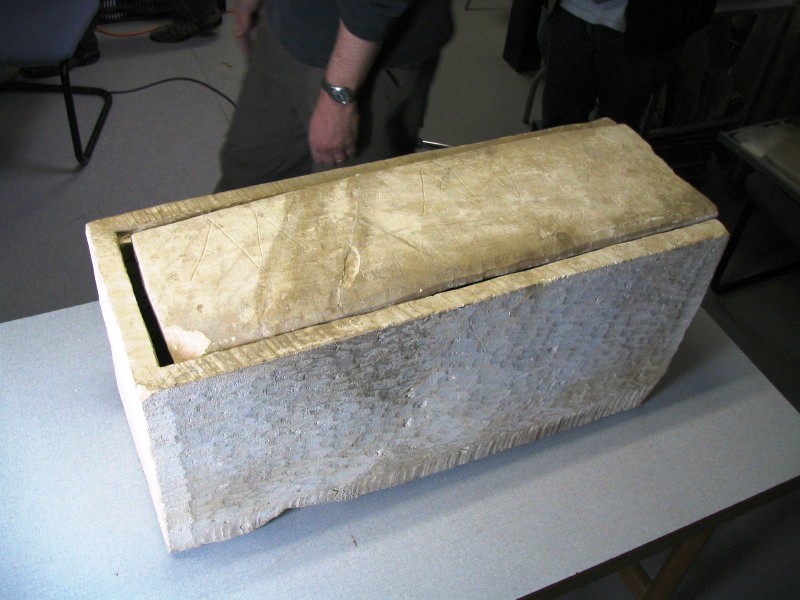
Monument Of The Silversmiths
In Acts 19:24-41 a dispute and an unlawful public assembly took place at the Grand Theatre in Ephesus (See Evidence for New Testament Places). The incident centered around Paul and Christianity’s emphasis on monotheism was a severe threat to the Silversmith’s livelihood because their trade depended on the belief in multiple gods.
In 1984, a monument was discovered that testified to the prominence of the silversmiths in Ephesus. The inscription declared that it had been paid for by the silversmiths and described the city as the “greatest metropolis of Asia, [and] the thrice-honored temple guardian of the venerable Ephesians.” The inscription uses the same Greek word, neokoros, as the Bible does to describe Ephesus as the “guardian” of the temple of Artemis.
For a certain man named Demetrius, a silversmith, who made silver shrines of Artemis, was bringing no little business to the craftsmen; these he gathered together with the workmen of similar trades, and said, “Men, you know that our prosperity depends upon this business. “And you see and hear that not only in Ephesus, but in almost all of Asia, this Paul has persuaded and turned away a considerable number of people, saying that gods made with hands are no gods at all. “And not only is there danger that this trade of ours fall into disrepute, but also that the temple of the great goddess Artemis be regarded as worthless
Acts 19:24-27
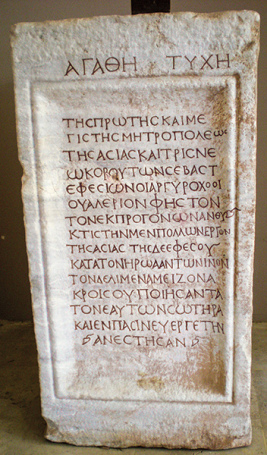
Emperor Of Rome Claudius Caesar (AD 41-54)
The Emperor Claudius (A.D. 41-54) ought to be twice as well known to readers of the New Testament as any other Roman Emperor, because the New Testament mentions him by name twice, whereas no other emperor is named more than once. Claudius appears twice in the Acts of the Apostles—once in Acts 11:28, where we are told of a great famine which broke out in his reign, and again in Acts 18:2, where he is said to have “commanded all the Jews to leave Rome”. It is noteworthy, in passing, that the only New Testament writer who so much as refers to a Roman Emperor by name is Luke; this is one indication of his concern to place the story of Christian origins within the context of world history.
And the disciples were first called Christians in Antioch. Now at this time some prophets came down from Jerusalem to Antioch. And one of them named Agabus stood up and began to indicate by the Spirit that there would certainly be a great famine all over the world. And this took place in the reign of Claudius.
Acts 11:26-28
After these things he left Athens and went to Corinth. And he found a certain Jew named Aquila, a native of Pontus, having recently come from Italy with his wife Priscilla, because Claudius had commanded all the Jews to leave Rome.
Acts 18:1-2
